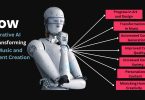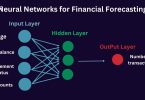Understanding the term Internet of Things (IoT) ecosystem necessitates recognizing the chemistry between three crucial components. It has three components, namely environment, data and people. An IoT ecosystem is the collective of multiple devices in different environments that collect data and send it to people. The main purpose of this data is to apply analyses for particular objectives, for instance, to design a smart home.
IoT devices do not operate individually, as they are all interconnected and linked to other devices. A single sensor or even a set of sensors is not usable unless they are connected and integrated with different systems that analyze the created data. This network of devices and technologies is used by experts for certain purposes.
It has numerous uses and since they are all different, there can be numerous interconnected systems. At its core, an IoT ecosystem operates on a simple schema: a device gathers information; this information is transmitted through a network to a central hub; the information is then used by an agent. The main elements of a connected ecosystem are devices, platforms and protocols. These components are as follows and let us discuss these in detail.
The Foundation: IoT Devices
These devices are unique and designed for different purposes.
On a basic level, these devices include detectors (that are used to measure characteristics of the environment like temperature, movement, or particles) and effectors (that are used to carry out actions like on/off or turn/tilt).
A complex solution often involves using several types of sensors and actuators to solve a given problem. For instance, smart surgical robot which is a complex intelligent system might require hundreds or thousands of parts to measure various parameters and to act correspondingly. This necessitates a variety of sensors and actuators working together.
Another crucial component in the IoT architecture is the IoT gateway. This hardware, often referred to as the network interface card or adapter, helps in establishing connectivity between two devices or between a device and the network and thus helps in passing on data.
The Conductor: IoT Platforms
IoT platforms serve as the central nervous system of the IoT ecosystem, providing the necessary infrastructure for several critical functions:
Device Management
IoT platforms allow for managing connected devices and their addition to the network and allow for control over their functioning.
Data Aggregation
These platforms gather information from devices and compile it in one location, thereby making it convenient to handle.
Data Analysis
IoT platforms also have features that enable data analysis and interpretation of the data that is collected, which yields insights that can be used in decision-making and improvement of operations.
Application Development
Application builders can leverage IoT platforms to design applications that incorporate device data and capabilities to offer particular solutions.
The Language: Communication Protocols
Since IoT devices are interconnected, for them to be able to exchange data, they must employ certain standard protocols. These protocols define the guidelines for the sharing of information across the networking systems. This makes it possible for the different systems to work together. Some widely used protocols include the following…
Wi-Fi
Used mostly for linking devices in a LAN, characterized by high data transfer speeds and stable links.
Bluetooth
Perfect for transmitting signals between devices over a short range, Bluetooth is most often utilized in wearable devices and smart appliances.
Zigbee
Designed for energy-constrained devices such as battery operated, Zigbee is ideal for smart lighting and home automation.
Cellular Networks
These networks support communications that are needed for devices that are in motion, for example, automobiles and mobile health care monitoring equipment.
It is determined by factors such as: range, number of data transfers per second, energy consumption and security.
One of the foundational principles of the IoT is the extent of connectivity between the different components of the IoT ecosystem. Devices capture information; platforms analyze it; and protocols enable the exchange of information to flow unceasingly. This collaboration unlocks numerous possibilities:
Smart Homes
Intelligent devices can perform various functions; they can control, monitor and manage energy consumption and security, leading to more effective and convenient homes.
Industrial Automation
Sensory data is more effective in enhancing the productivity of production processes, in maintaining production processes, and in cutting the cost of production in industrial organizations than other forms of data.
Connected Cities
Integrated systems living in IoT infrastructure can help manage traffic, collection and distribution of wastes, and resource usage, which all enhance the quality of life in cities.
Wearable Technology
Technological devices such as smartwatches and other wearable devices can help in managing health metrics as well as deliver personalized care and encourage healthy living.
In conclusion IoT ecosystem is built on the interconnectivity of the devices, platforms and of the existing communication protocols. With this synergistic structure in place, we can develop unique products and services that give a new lease of life in different areas of our lives and sectors.








Leave a Comment